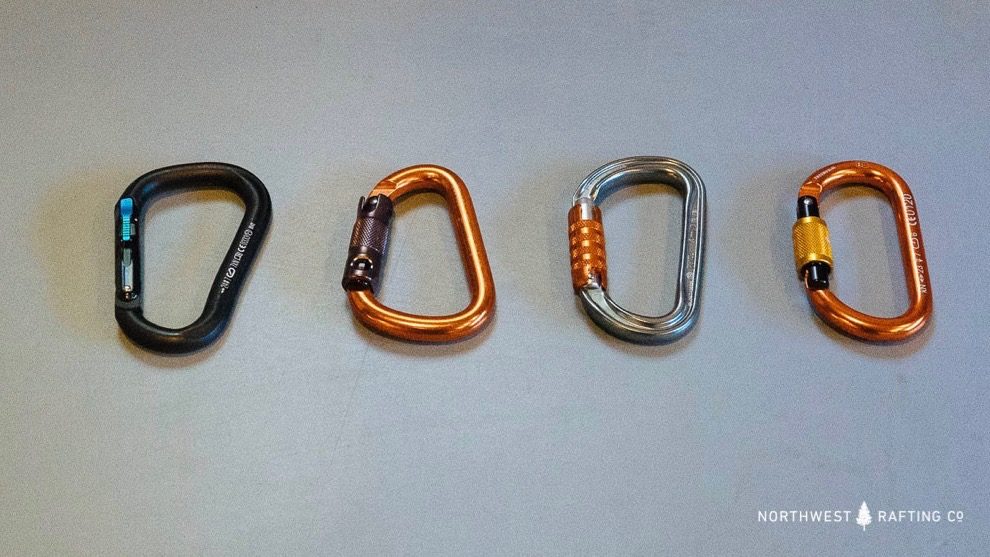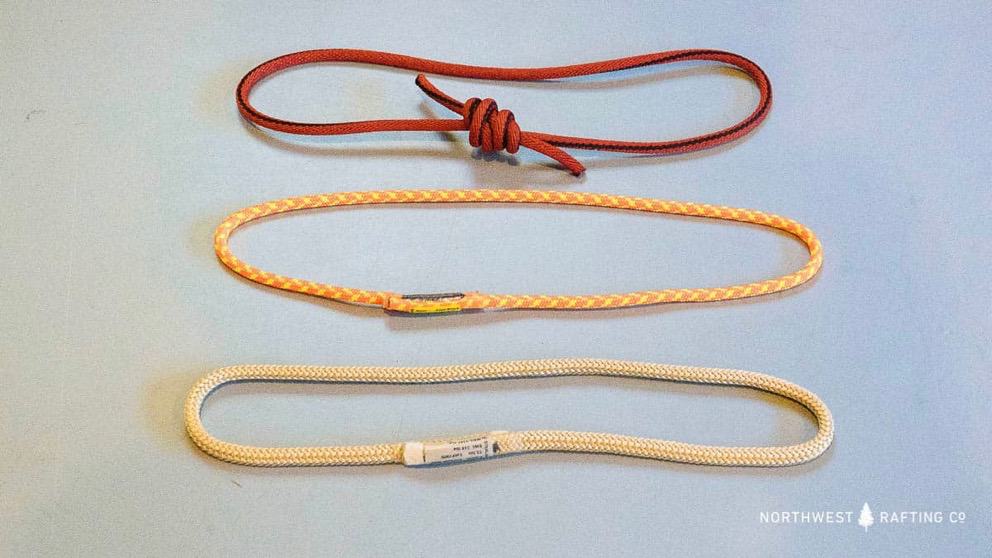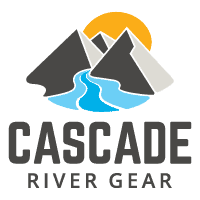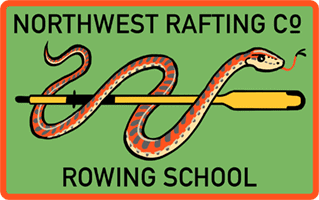Pro Tip: Personal Rescue Equipment (PRE)
A lot of boaters show up to put ins with all sorts of gadgets and gizmos in their PFDs for "safety". But what are they for? Do they know how to use them? The extra safety gear you carry on your person is known as Personal Rescue Equipment (PRE). Other equipment, such as static lines and big pulleys, in your safety kit is separate from PRE because it is in your boat, not on your person. Getting caught up in all the techy, cool, carabiners and pulleys out there is easy, it is better to keep the items you are carrying simple and functional. But, choosing from the wide variety of safety gear available can be overwhelming. Here are some tips to helping you decided on the best PRE for your whitewater adventures.
What is PRE?
As stated, PRE is gear you can carry in your PFD or on your person. The most common gear to be included in your PRE kit are locking carabiners, pulleys, prusiks, a flip line, and a throw bag. This is sometimes referred to as 4:3:2:1:1. However, it does not matter what PRE you are carrying if you do not know how to use it; it will not aid in any rescue situation. To be a safety asset rather than hazard, it is a good idea to take some sort of swiftwater training course and practice with any gear you choose to use. Also, double checking your PRE from time to time is good practice as the water, sand, and silt can rust out metal and cause gear failures.
In addition to having PRE, where and how it is stored needs to be thought out. Recently, in an International Rafting Federation Course, I learned about the Clean Line Principle. Following this principle reminds you not to have any loops or grab points on your body bigger than your hand. The only exception is quick release items like throw bags or cow tails. Keeping this in mind will add to your own personal safety as you develop and use your personal rescue equipment.
Carabiners
Only use locking carabiners. There have been a number of fatalities from people getting hooked on unlocked carabiners. It is easy to avoid these accidents by only using carabiners that can be locked shut and kept locked while in whitewater. There are two main types of locking carabiners, auto-locking and self-locking.

Locking Carabiners
- Auto-locking
These are convenient since you will never forget to lock them. Furthermore, certain models only need one hand but can be tricky to use quickly. I encourage you to practice using them so, even with cold hands, they are easy to open and lock. This carabiner from Black Diamond is on the pricier end but is very easy to use with one hand.
- Manual-locking
Usually using a screw method, the locking and unlocking of these carabiners must be done manually. In stressful situations, it is easy to forget to lock your carabiner, but this can lead to fatal mistakes. But, if you practice locking and unlocking the muscle memory will help you use them successfully and safely. In general, these carabiners are a little bit cheaper and will last a long time if taken care of properly.
Pulleys
There are tons of rescue pulleys on the market and some are better suited for whitewater than others. What you have in your safety kit and the type of boat you are using will play into how many pulleys are in your personal rescue equipment kit. As a kayaker, I choose not to carry any pulleys because they are a little bit bulky in my PFD and I can set up a 3:1 with only carabiners, prusiks, an anchor and my throw bag. When I am rafting, my PRE will change because carrying a pulleys might be crucial to obtaining enough mechanical advantage to get a raft unstuck.

Pulleys
Different factors to consider when buying pulleys are:
- Durability in Water
Sealed bearings will prevent rusting inside the moving mechanisms which will cause them to be stiff and function improperly. Unsealed bearing pulleys will eventually fail and need to be replaced from water damage. In addition, pulleys with plastic pieces are more likely to stop working efficiently when left to sit in the wet environment of a PFD.
- Weight
Carrying a lot of pulleys in your PFD will decrease your flotation substantially, it may be worth the extra cash to purchase lighter pulleys.
- Breaking Strength and Max Rope Diameter
A lot of times small pulleys that have a high breaking strength will only work with small rope diameters. Double check that your pulleys are appropriate for the ropes you are using as well as strong enough to handle forces you might encounter
Prusiks
In whitewater scenarios, keeping carabiners and systems static are the main jobs for prusiks. Because they rely on friction to stick to the rope they are hitching around, the prusiks must be soft enough to properly grab the rope. To check your them, you can use the pinch test. When you bend your prusik in on itself, how big is the resulting loop? To pass the pinch test, the diameter of the rope you are using needs to be bigger than the loop of the pinched prusik. If the prusik is too stiff, it will ineffectively slide on the rope.
Fun fact: The word prusik is both the name of the actual loop of cord and the name of the knot used.

Prusiks
I really like using Sterling AutoBlock prusiks. They pass the pinch test for any rope because they completely fold onto themselves. They are light weight and have a stitched seam, taking up less space in a PFD. As a kayaker and raft guide, I am likely to use my throw bag for emergency situations and these prusiks will work with even the smallest rope.
A Flip Line
Classically, rafters have used webbing to create their 8-12 foot long flip line and worn it around their waist. While still a perfectly acceptable solution, there are a couple things to consider:
- Hand sized loops
How big are the loops on the ends of your flip line? If they are big enough to stick your hand through, they need to be made smaller to avoid accidents.
- Storage
If you insist on keeping it around your waist, make sure it is tight enough to avoid catching on sticks or things around your raft. In addition, consider tucking it under your shirt, dry top, or drysuit to ensure it will not get caught.
- Multi-function
I like to carry a flip line that can double as an anchor in mechanical advantage systems. Some homemade flip lines made with randomly found webbing may not be strong enough to be viable anchors. Alternatively, buying a flip line can ensure their weight bearing loads are large enough.
These two have a high tensile rating, come with small sewn loops at either end, and are compact enough to fit in a PFD: Palm Cobra Sling and Palm Equipment Snake Sling.
Following the Clean Line Principle, many rafters are transitioning to storing their flip lines coiled in their PFD.
Throw Bag
The lasts piece of personal rescue equipment is a throw bag. While not always on your person, they should still be within hands reach while you are boating. Waist bags are great because they are out of the way, secure, and always with you. Regardless, the most important factor when choosing a throw bag is whether or not you can accurately throw it. It is pointless to have the longest throw bag with the strongest rope if it is to heavy to throw or uncomfortable to wear. Keeping with the Clean Line Principle, wear your waist bag tight and with the quick release belt easy to access.
Finally, make sure your throw bag is packed properly, knot free, and stuffed entirely inside the bag. Leaving any rope outside the bag allows for a higher chance of all the rope becoming loose, creating a giant entrapment hazard. Currently, I am digging the Super Guide Throwbag. Besides the awesome colors, they have a small carabiner pocket as well as a small loop on the outside for attaching to. What is more, it is comfortable to wear, comes with very high quality rope, and is a good size for me to throw.
Compiling your personal rescue equipment should not be an easy task. Each piece needs to be considered for its whitewater compatibility, usability, and then practiced with. What are your favorite pieces of gear to use? Comment below!




